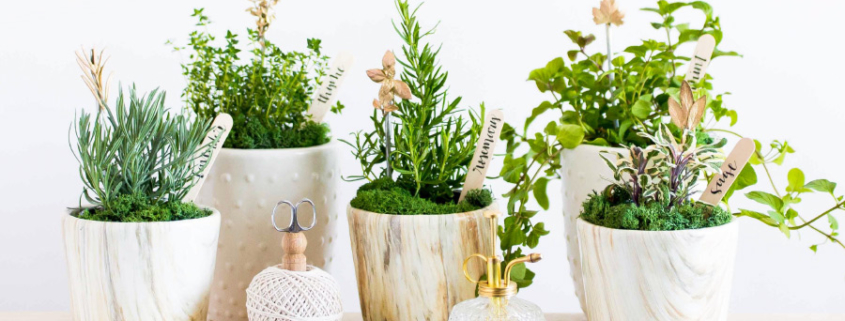Gardening can take place no matter what the size of your home. It’s just a matter of prioritizing your needs and wants, heeding your location and growing seasons, and being creative with the space you have.
If an edible garden is your thing, almost all fruits and vegetables can be grown in a pot or small plot in the garden. Your initial investment should be in good soil, ideally designed for producing food. Ensure you have easy access to a watering source (if outdoors) and that the garden is located where there is plenty of sunlight. If you are planting in a yard outdoors, be aware certain visitors – rabbits, chipmunks, squirrels, and raccoons might feast on your plants, so take the time to build a fence or cover the area with chicken wire. If that’s too daunting, keeping your plants in containers on a window ledge or balcony may be a better option.
Here are five things to consider
before planting a vegetable or fruit garden:
Know your limitations. If you’re new to gardening and want to start with low maintenance plants, try an ornamental garden of annuals, or grow herbs and greens the first year. Herbs are hearty and can bounce back if the soil dries out for a few days. Greens, like lettuce, grow quickly and are not as fussy about the sun. They also produce a quick yield so you can enjoy the bounty throughout the summer. Avoid touchy plants such as tomatoes and peppers – tomatoes require strict regular watering or the fruit will not ripen in time or can go mouldy before turning red. Peppers, especially spicy varieties, need a great deal of sunshine and heat as well as regular watering.
Find the sun. Most vegetable and fruit plants require six or more hours of sun each day. Without enough sun, the fruits will not ripen. If a sunny spot is hard to come by, there are a few veggies that can survive in moderate shade, such as lettuce, greens, and broccoli. Black pots retain more heat which may be ideal for locations with less sun and more shade, or when growing plants that require more heat.
Be prepared for regular watering. Check your soil daily and ensure it stays moist and never dries to the point of cracking. It’s important to water the soil without leaving the leaves wet so consider using a soaker hose instead of a sprinkler in the garden, and use a watering can for potted plants. Wet leaves can leave plants vulnerable to mould and blights. Also, consider the type of pot and how quickly it dries out. Moisture evaporates through clay pots, so they will dry out faster than plastic ones. The larger the container, the more soil you’ll have to work with and the less often you have to water.
Use good soil. It’s critical to invest in a soil that’s rich in organic matter, and one designed specifically for vegetables and fruits. Garden stores and nurseries carry different types of soils. If you’re sticking to an ornamental garden this year, be sure to select a soil for container gardening, which is more nutrient-dense than the soil for a garden. Remember, planters are not utilizing natural fertilizers from Mother Nature, so the dirt needs a boost right out of the gate.
Bring them indoors after the season. Some vegetables and herbs can grow all year round. If you take to container gardening, bring your plants indoors when the season is over and enjoy fresh produce throughout the winter. The easiest plants to keep going are herbs.
Written By: Julie Achtermeier



